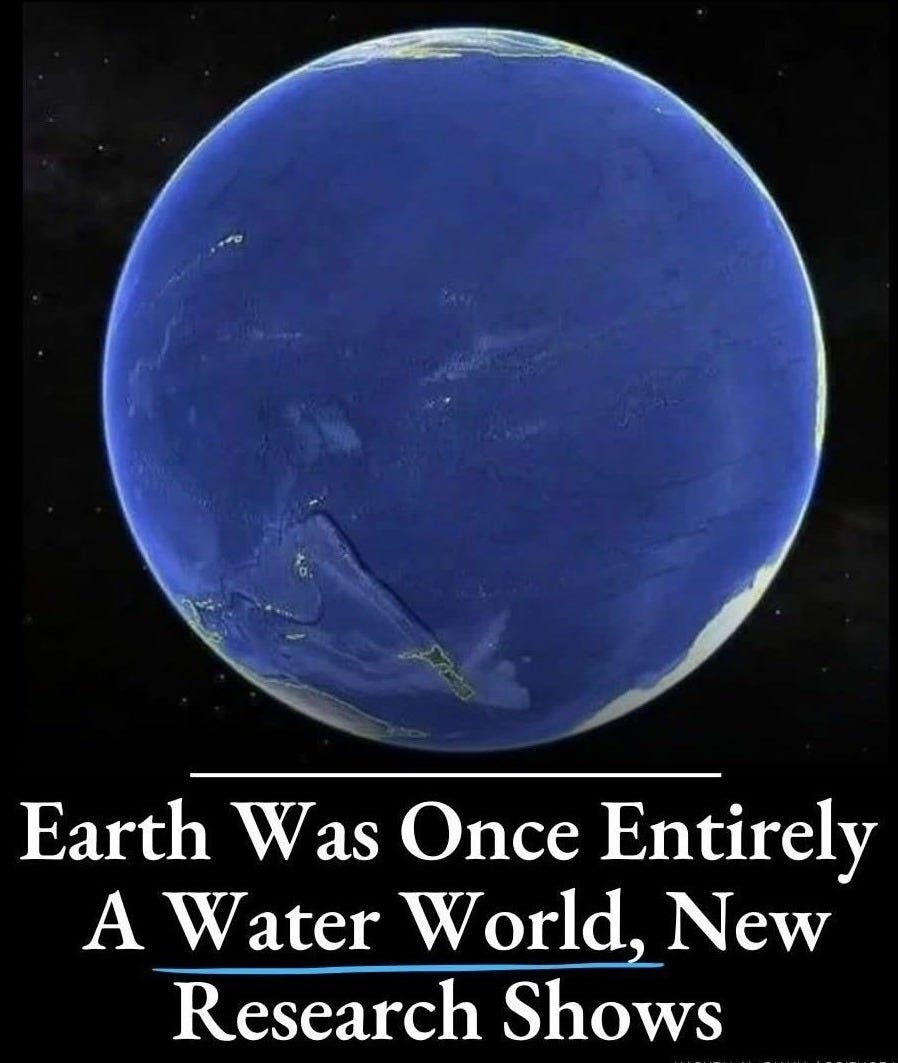Science catches up to first verses of Bible
It only took around 570 years for researchers to open the Bible to chapter one of Genesis.
A few days ago, I couldn’t help but laugh at the following headline: “Earth was once entirely a water world, new research shows.” New research?!?
On January 1, 2025, I embarked on a journey to read the entire Bible in a year, by daily reading of chapters in both the Old Testament and New Testament—email me if you’d like to see my reading plan. That said, I’m definitely not a Bible scholar, so I did my own research into how long the Bible has been in print.
According to the internet, the first complete, published Bible was the Gutenberg Bible, which was produced in the 1450s by Johannes Gutenberg using his newly invented printing press in Mainz, Germany. Most scholars agree that the printing of this Bible was completed around 1455—that’s around 570 years ago! And the 66 books of the Bible as we know it were written and compiled over centuries prior to the Gutenberg Bible.
Ok, but the Gutenberg Bible was written in Latin and maybe researchers didn’t know how to speak Latin. What about the first English translation of the Bible? The first complete English translation of the Bible was actually published in 1382—643 years ago—by John Wycliffe and his followers; however, Wycliffe's translation wasn’t based on the original Hebrew and Greek texts.
Translations from the original languages included the Tyndale Bible, translated by William Tyndale, the first English Bible to be translated directly from Hebrew and Greek texts. Tyndale completed the New Testament in 1526, but he was executed before he could finish the Old Testament. The first complete English Bible translated from the Hebrew and Greek, known as the Coverdale Bible, was published in 1535—490 years ago—by Myles Coverdale. Although Coverdale relied partly on Tyndale's work, the rest was his own translation. These early translations laid the groundwork for subsequent versions, including the famous King James Version (KJV) published in 1611—a mere 414 years ago.
Genesis 1:1-13 (from the Christian Standard Bible)
1 In the beginning God created the heavens and the earth.
2 Now the earth was formless and empty, darkness covered the surface of the watery depths, and the Spirit of God was hovering over the surface of the waters.
3 Then God said, “Let there be light,” and there was light. 4 God saw that the light was good, and God separated the light from the darkness. 5 God called the light “day,” and the darkness he called “night.” There was an evening, and there was a morning: one day.
6 Then God said, “Let there be an expanse between the waters, separating water from water.” 7 So God made the expanse and separated the water under the expanse from the water above the expanse. And it was so. 8 God called the expanse “sky.” Evening came and then morning: the second day.
9 Then God said, “Let the water under the sky be gathered into one place, and let the dry land appear.” And it was so. 10 God called the dry land “earth,” and the gathering of the water he called “seas.” And God saw that it was good. 11 Then God said, “Let the earth produce vegetation: seed-bearing plants and fruit trees on the earth bearing fruit with seed in it according to their kinds.” And it was so. 12 The earth produced vegetation: seed-bearing plants according to their kinds and trees bearing fruit with seed in it according to their kinds. And God saw that it was good. 13 Evening came and then morning: the third day.
570 years after the first complete printing of the Bible, “new research” has caught up to the fact that dry land—Earth—appeared on the third day of creation, and God saw that it was good.
Imagine the researchers’ surprise when they eventually make it through the Old Testament and discover that faith alone in Jesus Christ alone provides everlasting life for anyone who believes in him for it.





